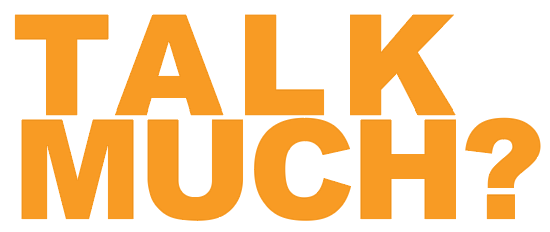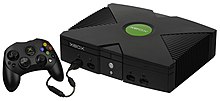Xbox is a video gaming brand created and owned by Microsoft. The brand consists of five video game consoles, as well as applications (games), streaming services, an online service by the name of Xbox Live, and the development arm by the name of Xbox Game Studios. The brand was first introduced in the United States in November 2001, with the launch of the original Xbox console.
The original device was the first video game console offered by an American company after the Atari Jaguar stopped sales in 1996. It reached over 24 million units sold as of May 2006. Microsoft‘s second console, the Xbox 360, was released in 2005 and has sold 84 million units as of June 2014. The third console, Xbox One has been released in 21 markets in total, with a Chinese release in September 2014. The fourth and fifth consoles, Xbox Series X and Series S, were released in November 2020. The head of Xbox is Phil Spencer, who succeeded former head Marc Whitten in late March 2014.
First generation: Xbox
The original Xbox was released on November 15, 2001, in North America, February 22, 2002, in Japan, and March 14, 2002, in Australia and Europe. It was Microsoft‘s first foray into the gaming console market. As part of the sixth-generation of gaming, the Xbox competed with Sony’s PlayStation 2, Sega’s Dreamcast (which stopped American sales before the Xbox went on sale), and Nintendo’s GameCube. The Xbox was the first console offered by an American company after the Atari Jaguar stopped sales in 1996. The name Xbox was derived from a contraction of DirectX Box, a reference to Microsoft‘s graphics API, DirectX.
The integrated Xbox Live service launched in November 2002 allowed players to play games online with or without a broadband connection. It first competed with Dreamcast‘s online service but later primarily competed with PlayStation 2’s online service. Although these two are free while Xbox Live required a subscription, as well as broadband-only connection which was not completely adopted yet, Xbox Live was a success due to better servers, features such as a buddy list, and milestone titles like Halo 2 released in November 2004, which is the best-selling Xbox video game and was by far the most popular online game for the system.
Second generation: Xbox 360
The Xbox 360 was released as the successor of the original Xbox in November 2005, competing with Sony‘s PlayStation 3 and Nintendo‘s Wii as part of the seventh generation of video game consoles. As of June 30, 2013, 78.2 million Xbox 360 consoles have been sold worldwide.[20] The Xbox 360 was officially unveiled on MTV on May 12, 2005, with detailed launch and game information divulged later that month at the Electronic Entertainment Expo (E3). The console sold out completely upon release in all regions except in Japan. Several retail configurations of the core Xbox 360 model were offered over its lifetime, varying the amount of RAM and internal storage offered.
The Xbox 360 showed an expanded Xbox Live service (which now included a limited “Free” tier called Silver), the ability to stream multimedia content from PCs, while later updates added the ability to purchase and stream music, television programs, and films through the Xbox Music and Xbox Video services, along with access to third-party content services through third-party media streaming applications. Microsoft also released Kinect, a motion control system for the Xbox 360 which uses an advanced sensor system.
Two major revisions of the Xbox 360 were released following the initial launch. The Xbox 360 S (typically considered as “Slim”), launched in 2010, featured the same core hardware but with a redesigned, slimmer form factor with a smaller-sized 250 GB hard drive. It also added integrated 802.11 b/g/n Wi-Fi, TOSLINK S/PDIF optical audio output, five USB 2.0 ports (compared to the three from older versions) and special port designed for the Kinect peripheral. The Xbox 360 S replaced the base Xbox 360 unit, which was discontinued, and sold at the same price. A cheaper Xbox 360 S unit, removing the 250 GB drive while adding 4 GB of internal store, was released later in 2010; the unit allowed users to hook up an external storage solution or purchase a 250 GB internal add-on.
The second major revision of the Xbox 360 was the Xbox 360 E, released in 2013. It featured a case style similar to the upcoming Xbox One, and eliminated one USB port and the S/PDIF, YPbPr component and S-video connections, but otherwise shared the same specifications as the Xbox 360 S.
Third generation: Xbox One
The Xbox One was released on November 22, 2013, in North America, as the successor of the Xbox 360. The Xbox One competes with Sony’s PlayStation 4 and Nintendo’s Wii U and Switch as part of the eighth generation of video game consoles.
Announced on May 21, 2013, the Xbox One has an emphasis on internet-based features, including the ability to record and stream gameplay, and the ability to integrate with a set-top box to watch cable or satellite TV through the console with an enhanced guide interface and Kinect-based voice control.
Following its unveiling, the Xbox One proved controversial for its original digital rights management and privacy practices; while Microsoft touted the ability for users to access their library of games (regardless of whether they were purchased physically or digitally) on any Xbox One console without needing their discs, and the ability to share their entire library with 10 designated “family” members, all games would have to be tied to the user’s Xbox Live account and their Xbox One console, and the console would be required to connect to the Internet on a periodic basis (at least once every 24 hours) to synchronize the library, or else the console would be unable to play any games at all. After an overwhelmingly negative response from critics and consumers (who also showed concerns that the system could prevent or hinder the resale of used games), Microsoft announced that these restrictions would be dropped. Microsoft was also criticized for requiring the Xbox One to have its updated Kinect peripheral plugged into function, which critics and privacy advocates believed could be used as a surveillance device. As a gesture toward showing a commitment to user privacy, Microsoft decided to allow the console to function without Kinect.
On June 13, 2016, Microsoft announced the Xbox One S at E3 2016, which featured a smaller form factor, as well as support for 4K video (including streaming and Ultra HD Blu-ray) and HDR. At E3 2017, Microsoft unveiled Xbox One X, a high-end model with improved hardware designed to facilitate the playing of games at 4K resolution.
Since November 2014, Microsoft has stated it will not release sales numbers for the Xbox One line. Industry estimates project global sales of the Xbox One family to be 46.9 million as of October 2019. Xbox head Phil Spencer said that while they do internally track sales figures, they do not want their developers to be focused on these numbers as to affect their products, and thus have opted not to report further sales of Xbox hardware going forward.
Fourth generation: Xbox Series X and Series S
The fourth generation of Xbox models, simply named Xbox, will include the Xbox Series X and Xbox Series S that launched on November 10, 2020. These are high- and low-end versions comparable to the Xbox One X and Xbox One S models, respectively, with all games designed for this model family playable on both systems. The Xbox Series X is estimated to be four times as powerful as Xbox One X, with support for 8K resolution and up to 120 frames-per-second rendering, with a nominal target of 4K resolution at 60 frames per second. The Xbox Series S is a digital-only unit with less graphic processing power, but can still render at a nominal 1440p resolution at 60 frames per second with support for 4K upscaling. Both consoles features support for new graphics rendering systems including real-time ray-tracing, and the new Xbox Velocity Architecture that works with the internal SSD drive to maximize the rate of texture streaming to the graphics processor, among other features. Besides games for this new console family, both consoles are fully compatible with all Xbox One games and most hardware, as well as all backward compatible games that were playable on the Xbox One from the Xbox 360 and original Xbox console.
To help transition consumers, Microsoft introduced its Smart Delivery system which most of its first-party games and several third-party games will use to offer free updates to Xbox One versions of games to the Xbox Series X/S version over the first few years of the consoles’ launch.





